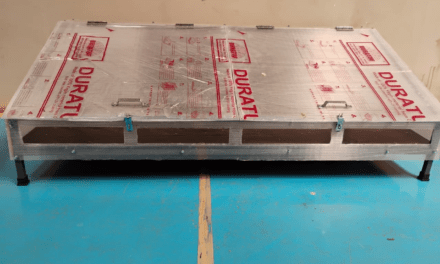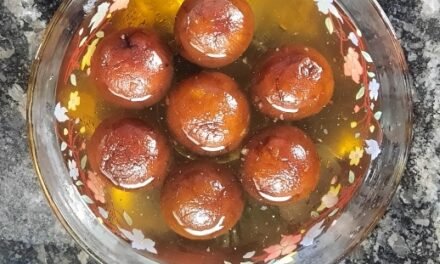INTRODUCTION:
Polyhouse rely on efficient cooling systems to regulate temperatures and maintain optimal growing conditions for crops. Cooling pads are a critical component of these systems, helping to reduce temperatures and maintain humidity levels. However, algae growth on these pads can compromise their effectiveness, leading to reduced crop yields and increased maintenance costs. Effective control of algae growth on polyhouse cooling pads is essential to ensure optimal growing conditions and maximize crop productivity.
OBJECTIVE:
- Identify causes of algae growth: Determine the factors contributing to algae growth on cooling pads in polyhouses.
- Evaluate control methods: Assess the effectiveness of various methods for controlling algae growth on cooling pads.
- Optimize cooling pad performance: Develop strategies to maintain optimal performance and efficiency of cooling pads in polyhouses.
- Reduce maintenance costs: Minimize the economic impact of algae growth on cooling pad maintenance and replacement.
LIME TREATMENT:
Lime can be used to control algae growth in cooling systems, including polyhouse cooling pads, by raising pH levels, reducing nutrient availability, and disturbing algae cells. Lime increases the pH, making it less suitable for algae growth, as most algae thrive in slightly acidic to neutral pH ranges (6.5 – 7.5). By raising the pH above 8.5-9, lime can inhibit algae growth, and the high pH and calcium ions can disrupt algae cell membranes, ultimately leading to their death.
04/06/2025
I brought a sample of water from a pond where algae was present and conducted a lime treatment to increase the pH of the water. By adding lime to the water sample, I was able to raise the pH levels, creating an environment less conducive to algae growth.
Observations:
100 mL water sample
Initial
pH= 7.84
After addition of Lime
Weight of lime= 0.10 gm
EC= 10.80
Following the optimization of pH level in the 100 mL sample, I proceeded to calculate the corresponding amounts of lime required for a larger volume of 15 lit of water.
Amount of Lime= (0.15 * 15000) / 100
= 15 gm
06/06/2025
With the help of Tejaswini, who initially designed the setup, I was able to establish the experiment to test the effectiveness of lime treatment in controlling algae growth. Tejaswini’s design provided a solid foundation for the experiment, and her guidance ensured that the setup was properly configured to achieve accurate results.
I set up an experiment using two buckets, each containing 15 liters of water. One bucket had treated water (with lime treatment to control algae growth), while the other had untreated water. To simulate the flow of water over cooling pads, I used Tulu pump in both buckets, ensuring continuous water circulation over the pads. This setup allowed me to compare the difference in algae growth between the treated and untreated water, providing valuable insights into the effectiveness of lime treatment for algae on cooling pads.

Setup for experiment
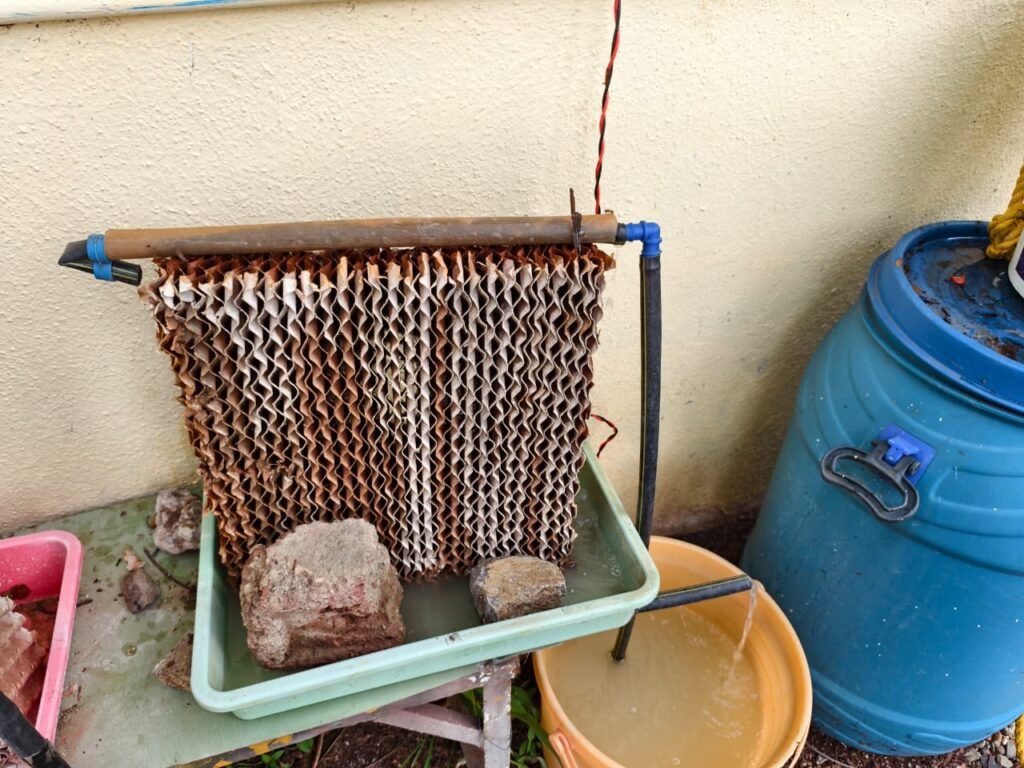
Treated water
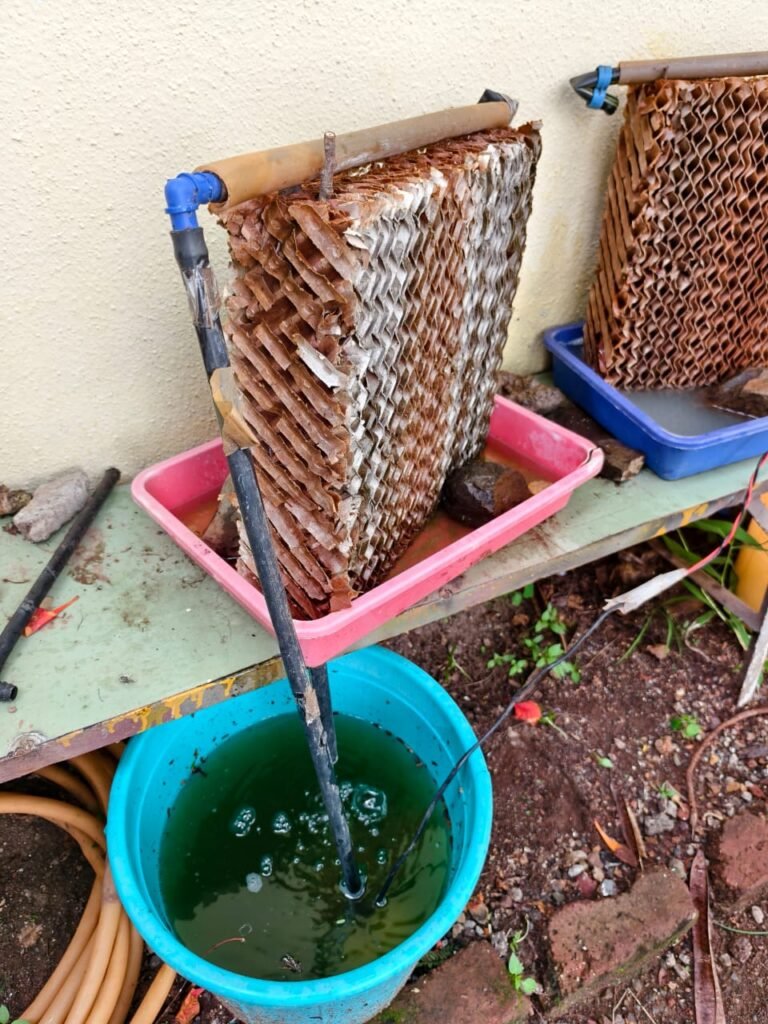
Untreated water
07/06/2025
I replenished the water in both buckets, adding 10 liters of treated water and 10 liters of untreated water to their respective buckets, maintaining the experimental setup.
08/06/2025
In a conversation with Dixit sir, I received valuable feedback regarding my approach to controlling algal growth. He pointed out that the use of lime might not yield the desired results and advised me to consider an alternative approach. Specifically, he recommended using sodium hypochlorite (commonly known as bleaching powder) as a more effective treatment option. The idea was that the sodium hypochlorite would target and eliminate algal spored, thereby reducing overall algal growth on the cooling pads.
BLEACHING POWDER:
| Parameter | Lime | Bleaching powder |
| Primary action | Increases pH to make environment less favorable. | Releases free chlorine, a strong oxidizer. |
| Effect on Algae | Slows growth by raising pH. | Kills algae by oxidizing cell component. |
| Speed of action | Slow and mild effect. | Fast and aggressive action. |
| Residual effect | Short-term | Long-term |
09/06/2025
To determine the effective dosage, I calculated the amount of bleaching powder required for 15 liters of water. The ideal concentration of chlorine for algae control typically ranges between 1-5 gm/lit. Based on the active chlorine content in the bleaching powder, I calculated the exact amount needed to achieve the desired concentration in 15 liters of water.
Calculations:
Available chlorine in Bleaching powder = 30-35 % (For safety consider 30%)
We want 100 ppm or 1 gm/lit concentration of chlorine.
Therefore, 0.1%
Required available chlorine = 15lit * 1 gm/lit
= 15 gm
Bleaching powder required = 15/0.30
= 50 gm
Based on my calculations, I prepared the treated water by adding the precise amount of bleaching powder to achieve the desired chlorine concentration. Once the powder was fully dissolved, I poured the treated water into the bucket, ensuring the system was ready for operation. With the water in place, I started the system, activating the pumps to circulate the treated water continuously over the cooling pads.
10/06/2024 – 13/06/2024
I added the treated water to the bucket as required, ensuring a consistent level and flow rate. With the system operational, I allowed the water to flow continuously over the cooling pads, simulating real-world conditions. This ongoing flow helped to maintain a steady environment for testing the effectiveness of the treatment in controlling algae growth.
14/06/2025
I presented the results of my experiment to Dixit sir, showcasing the effectiveness of the bleaching powder treatment in controlling algae growth on the cooling pads. Upon reviewing the data and observations, Dixit sir was pleased with the outcomes, noting that the treatment had successfully achieved its intended purpose. The satisfactory results validated the approach and calculations used in the experiment, providing valuable insights for future applications.
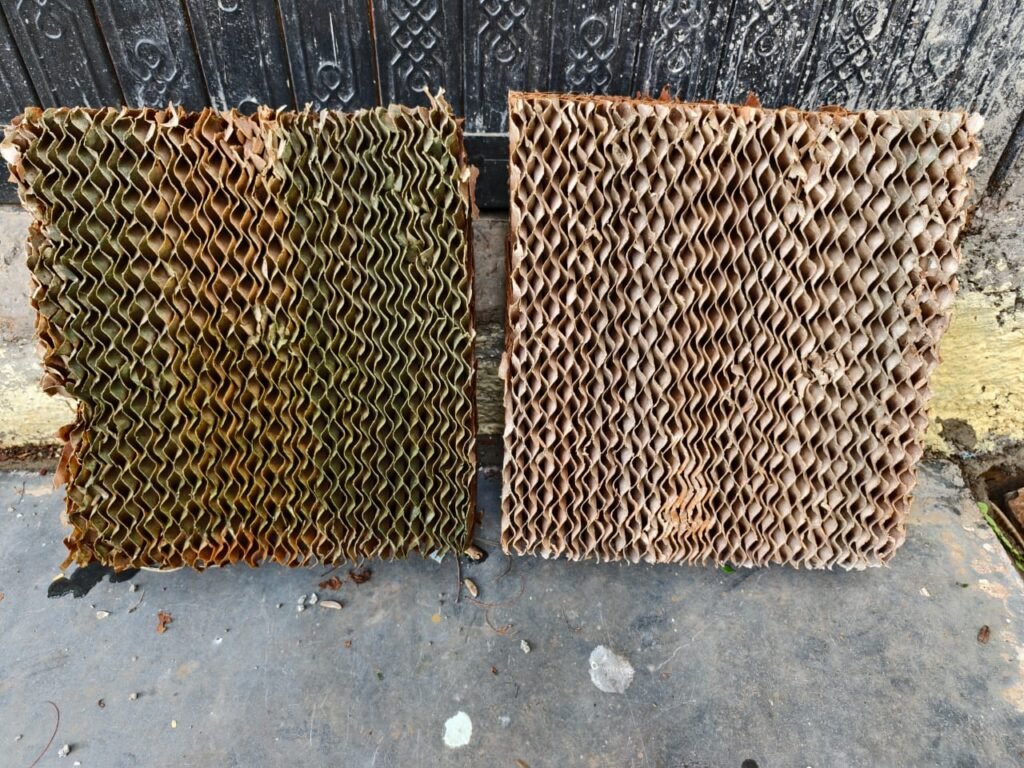
CONCLUSION:
The experiment demonstrated the effectiveness of bleaching powder in controlling algae growth on cooling pads. By calculating and applying the optimal dosage, the treatment successfully reduced algae growth, maintaining system efficiency. The satisfactory results, validated by Dixit sir, suggest that bleaching powder can be a viable solution for algae control in similar systems, offering a practical approach to improving performance and reducing maintenance needs.


